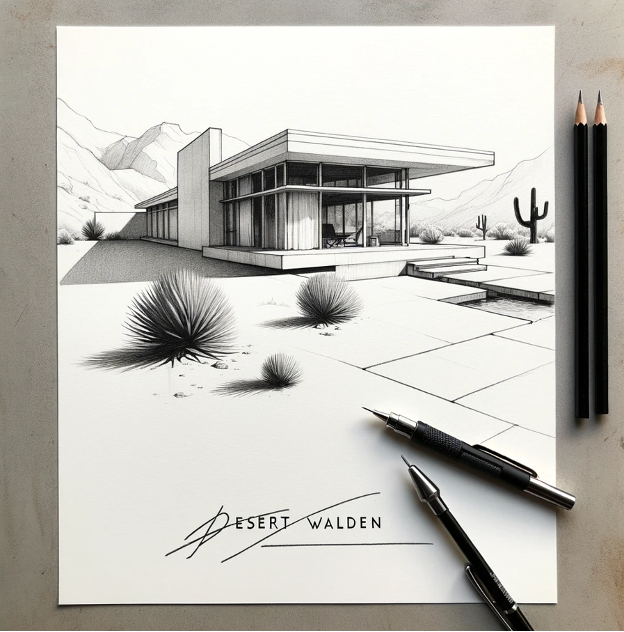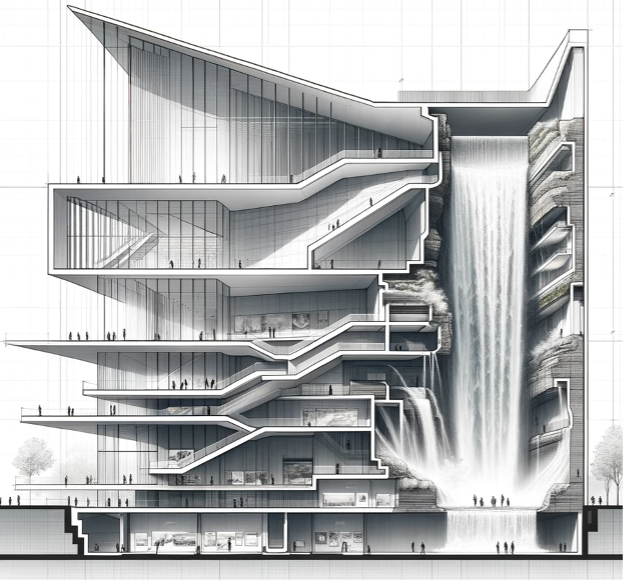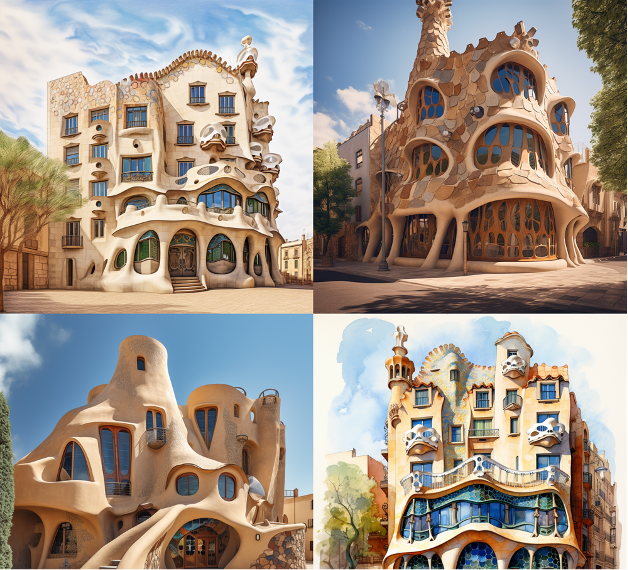AASL Column, January 2024
Barret Havens and Barbara Opar, column editors
A.I.-Generated Architectural Images in Student Work: Implications and Challenges
Column by Barret Havens, University Librarian, Woodbury University
“From March 2023 to September 2023, we have seen GenAI usage rise dramatically, with faculty using at 22% and nearly half (49%) of students using (image-generating A.I.)”
-Tyton Partners
The sudden and unprecedented access to image-generating artificial intelligence (A.I.) applications such as Midjourney and DALL-E poses both opportunities and challenges for academia. Schools of architecture have incorporated the use of computer-aided-design technologies into their policies and curricula for decades. However, compared to previous tools, the challenges presented by image-generating A.I. are unique.
Within seconds, by inputting simple textual prompts, Midjourney or DALL-E can crank out images that would take a human many hours to produce. While this new technology is taking design disciplines in exciting new directions, it also makes it very difficult to judge how much thought and effort a student has put into their work.
In light of this, architecture librarians and architecture faculty must experiment with these applications in order to understand the capabilities and implications related to their use. As the statistics at the top of this article indicate, students’ familiarity with A.I. tools significantly exceeds that of faculty. However, those statistics are based on a poll of faculty from a wide variety of disciplines. It is worth noting here that faculty in design-related disciplines are, historically, early adopters (or even developers) of technology. Consequently, it is likely that the percentage of architecture faculty who have experimented with these tools is higher than 49%.
It is very challenging to determine whether a student has used images generated by A.I. in their work (of course, this is only an issue if they were tasked with following a specific process for producing an architectural image that prohibited the use of A.I). To boot, the task of discerning whether an architectural image comes from an authoritative source is made more difficult since the output of art-generating A.I. is so refined. Examining images for aberrations or inconsistencies ranging from extra digits on a human subject’s hands to far more subtle clues can be somewhat effective. However, due to the rapid evolution of these tools, the inconsistencies within images will eventually become all but imperceptible to the human eye. Although tools such as AI or Not, which are designed to detect the use of A.I. in image production, are becoming more sophisticated as well, it is difficult to tell at this stage whether they will be able to keep up with the rapid evolution of image-generating A.I. applications.
The following examples demonstrate the magnitude of the possibilities for taking design in new directions and the challenges of detecting whether A.I. has been used in the production of architectural images.
Desert Walden
Application: DALL-E Version 3; Prompt: minimalist sketch pencil on white paper showing mid-century modern style home in the desert with a signature across the bottom that reads “Desert Walden”. Even the pencils were a part of DALL-E’s image. Generated by the author.

Museum with Waterfall
Application: DALL-E Version 3; Prompt: architectural section drawing of a museum with a waterfall pouring down the exterior. Generated by the author.

Adobe by Gaudí
Application: Midjourney Version 5; Prompt: /imagine adobe building in the architectural style of Antoni Gaudí. Generated by the author.

In conclusion, image-generating A.I. is here to stay: “75% of students indicate that they will continue to use image-generating AI even if their professors or institutions ban the technology” (Tyton Partners). In order to develop thoughtful and appropriate responses to the challenges outlined here, it is critical that architecture librarians and architecture faculty familiarize themselves with the capabilities of image-generating A.I. tools such as DALL-E and Midjourney. Furthermore, an open dialogue regarding their use should be maintained among architecture librarians, architecture school faculty, administrators and students. Resources that will help librarians and architecture faculty get started exploring these applications are included below.
Resources
Architizer’s 7 Top AI Tools for Generating Smart Architectural Plans
Midjourney Quickstart Guide (from the developer)
DALL·E Wizard: Free Tutorials, Guides, Prompts, Tips, and Tricks! (from the developer)
Harvard University’s Getting Started with Prompts for Image-based Generative A.I. Tools
References
Tyton Partners and Turnitin. “GenAI In Higher Education.” Tyton Partners, 2023, https://tytonpartners.com/app/uploads/2023/10/GenAI-IN-HIGHER-EDUCATION-FALL-2023-UPDATE-TIME-FOR-CLASS-STUDY.pdf. Accessed 23 Jan. 2024.

 Study Architecture
Study Architecture  ProPEL
ProPEL 